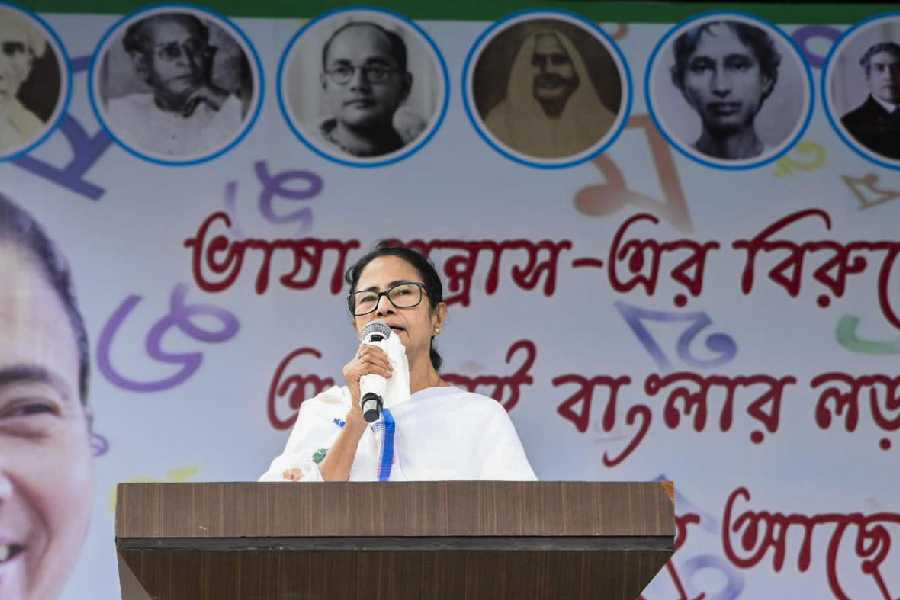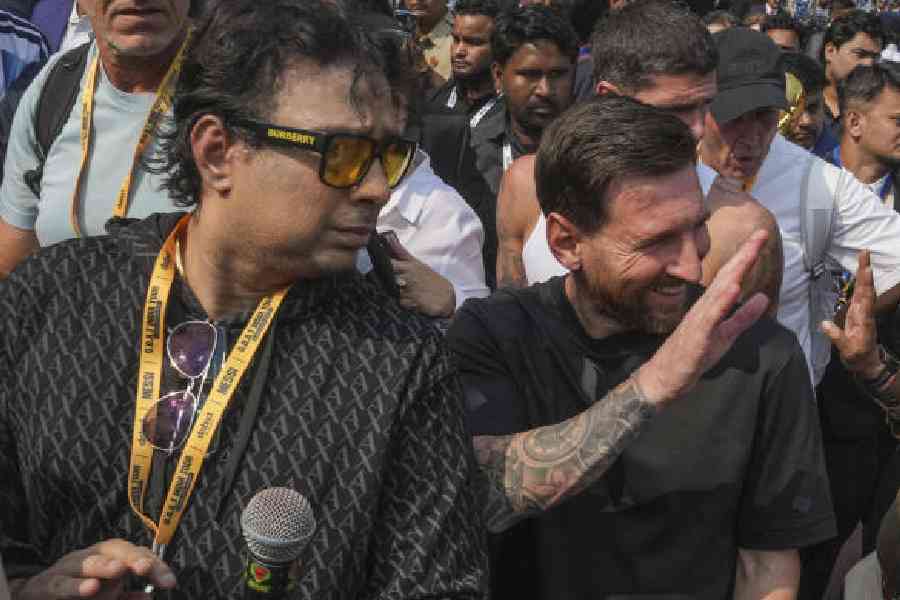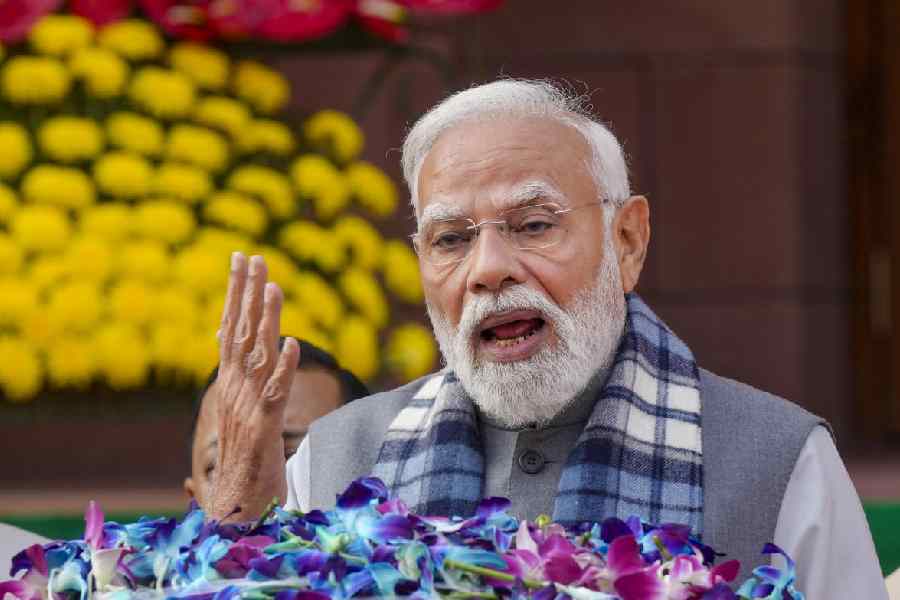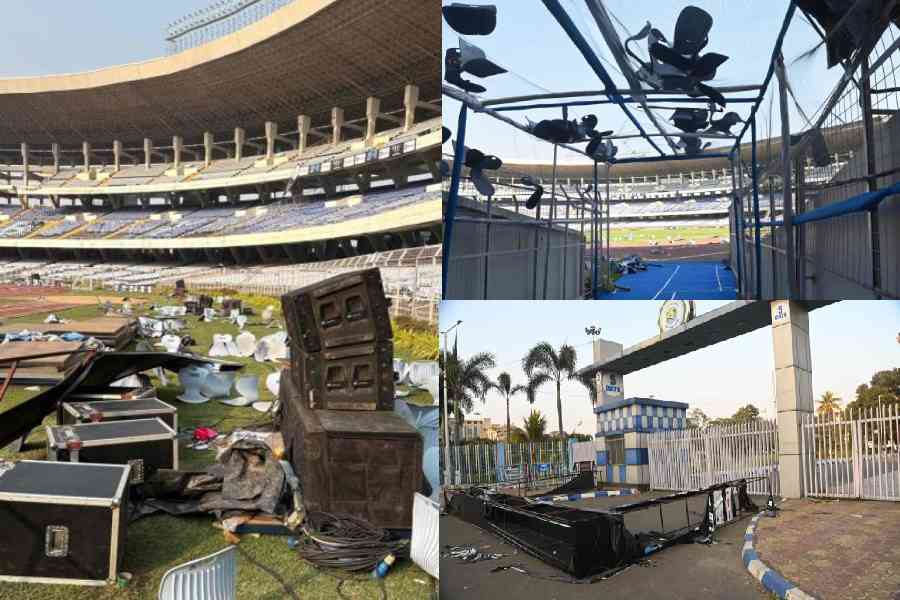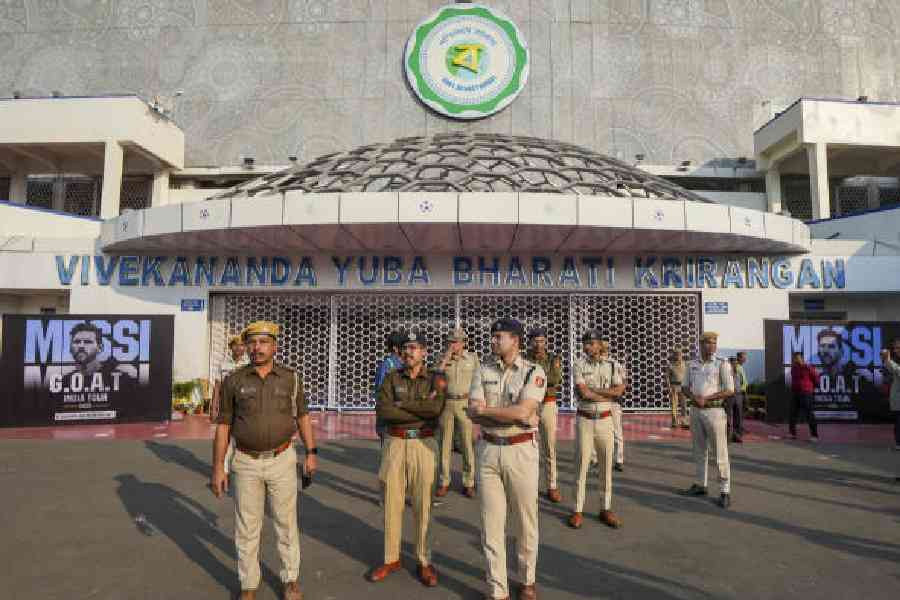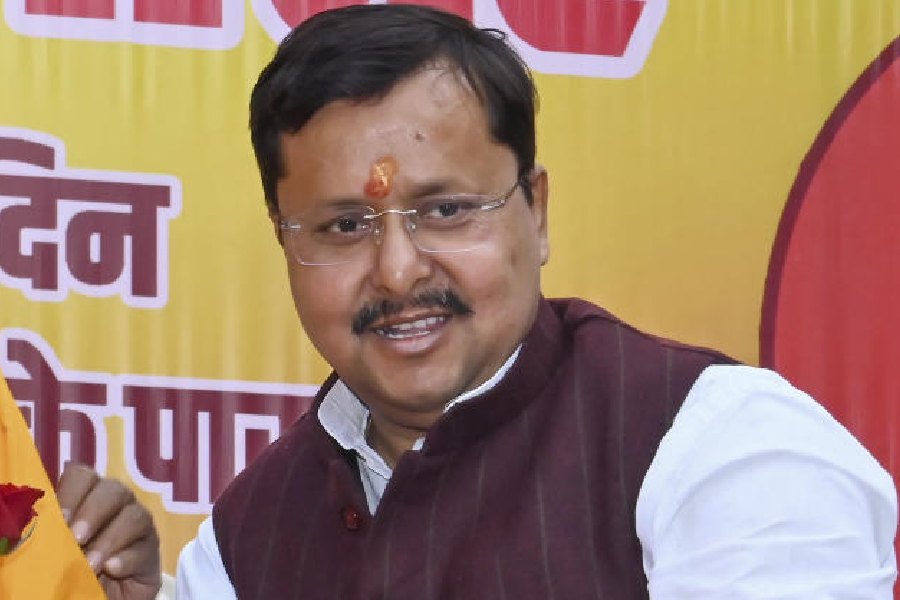Over the past decade, the English language has become needlessly jargonised to the point where it is the new normal. Invariably, as happens in a culture where intellectual fashion is partial to the esoteric, the explosion of new expressions has permeated the political language of West Bengal. Indeed, the Bengali language appears to have effortlessly internalised expressions that define the world of the post-Marxian fashionistas on both sides of the Atlantic.
In the past, the public appeal of political parties, including the Left that employed expressions and imagery uniquely its own, were accommodated under the general head of messaging or propaganda. These were analysed and assessed by the pundits without them becoming a fetish. It is interesting, for example, that assessments of the post-Independence Congress (until 1984, at least) centred mainly on social support and networks of mobilisation. Messaging featured, but rarely as something autonomous.
It is possible that the explosion and the evolution of social media after 2014 transformed ordinary political messaging into professionalised narrative-building. The Bharatiya Janata Party under Narendra Modi is credited with the makeover of what during the Vajpayee-Advani era was known as instinctive politics garnished with a dash of ideology. Other political parties have since then come to terms with the professionalisation of political communications. Almost every party maintains IT cells that are deployed 24x7 on social media to influence public opinion and even create fake news.
The so-called legacy media used to operate earlier on a different trajectory. However, with shrinking newsroom budgets, the focus of legacy media has shifted to cannibalising on ‘content’ generated by the social media. The extent to which political reporting has been reduced to reproducing X posts by the different players is quite depressing. It suggests a high degree of non-application of mind, not to mention the complete absence of the inside information that distinguished the legacy media from the bush telegraph. These changes have reshaped how politics is presented to the electorate.
If the so-called political analysts — a thinly disguised term for partisan commentators — are to be believed, the narrative of the 2026 assembly election in West Bengal has been set by the All-India Trinamool Congress at its annual July 21 Martyrs’ Day commemoration in Calcutta. Mamata Banerjee’s shrill call to the faithful to rally the forces for a war against the “language terrorism” allegedly launched by the Modi government on Bengali-speakers is understood to be the central theme of the AITC in its bid to retain power for the fourth consecutive term. With mega rallies scheduled in the districts each weekend, Mamata has planned a saturation campaign from now until counting day. To drive home the centrality of Bengali identity for the AITC, its MPs have been instructed to speak only in Bengali in Parliament.
There are two facets of Bengali nationalism that have the potential of influencing the polls, although not necessarily only to the AITC’s advantage.
The first is her claim — in the light of the Special Intensive Revision of the electoral rolls by the Election Commission — that all those who speak Bengali must necessarily be viewed as Indians. This controversial positioning is aimed solely at preventing any deletion from the electoral rolls of those who are illegal migrants from Bangladesh or Rohingyas from Myanmar. Mamata has already warned district officers against deleting even a single name. Since both these groups vote en bloc for the AITC, this denial of illegal immigration is understandable. Of course, the stand will further strengthen the AITC’s support base among Muslim voters, but will it trigger a Hindu counter-consolidation?
Much of Mamata’s tirades against the BJP’s alleged anti-Bengali stand is based on claims of harassment in the rest of India. Although there is nothing yet to suggest that people from West Bengal are being picked on, the success of Mamata’s narrative depends on this becoming a self-fulfilling prophecy. Her advice to Bengali migrant workers to return to Bengal smacks of desperation. According to a report in The Times of India, she has said: “There’s no need to stay in Mumbai, UP or Rajasthan. I may not be able to feed you pitha or payesh but if we eat one roti, we will ensure you get one too. You can live here in peace.” It is significant that the chief minister has steered clear of any promise of providing jobs in Bengal.
This invocation to migrant workers to return home could pose problems for the AITC. Among the major objectives of the Bhasha Andolan is to shift the narrative away from its grim 15-year record in governance to emotive issues. However, while there is always a place for identity politics in electoral decision-making, can such emotionalism be whipped up abruptly, since there is no record of Bengalis getting a raw deal or being humiliated in the rest of India? Will Bengali Hindu migrant workers feel a sense of solidarity with those they know are Bangladeshi Muslims? Against the assertion of linguistic identity is the counter claim of Hindu unity that is driving one important section of the BJP. It could be argued that this could have a greater pull for Hindus who appear to have become somewhat shaky after the post-Hasina persecution of Hindus in Bangladesh and the muscular Muslim assertion in parts of Bengal.
As of now, the BJP hasn’t jumped into the narrative war with its own emphasis on double engine economic growth and Hindu unity. In 2021, the party was unable to respond effectively to charges it was an organisation of outsiders and remote-controlled by Hindi speakers. This may explain its indifferent performance in Calcutta and the erstwhile Presidency Division. The AITC is likely to repeat these claims which can be countered if the BJP keeps its outside campaigners limited to Modi and Amit Shah and leave the rest to local talent.
Despite many pundits arriving at the conclusion that Mamata’s language nationalism is a stroke of genius and has already won her a steamroller majority, the final tally is likely to depend on the BJP’s success or failure to make the AITC’s development record the main issue. Again, everything doesn’t depend on narratives. If the battle gets reduced to organisation and election management, the BJP is put at a disadvantage. As of now, it is a party of the main roads, lacking penetration in the bylanes. This disadvantage can be overcome if emotion is pitted against emotion and the two narratives clash headlong.

